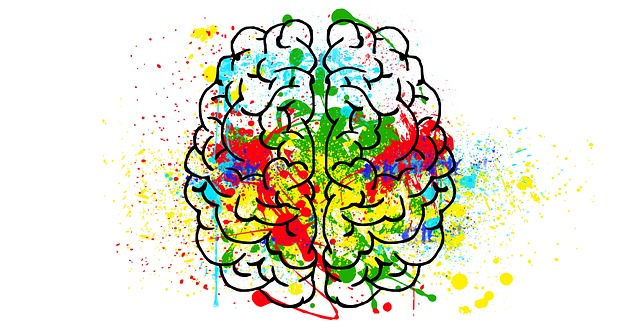
Encephalopathy means any disorder or disease of the brain, especially chronic degenerative conditions. In modern usage, encephalopathy does not refer to a single disease, but rather to a syndrome of overall brain dysfunction; this syndrome has many possible organic and inorganic causes.
Signs and symptoms
The hallmark of encephalopathy is an altered mental state or delirium. Characteristic of the altered mental state is impairment of the cognition, attention, orientation, sleep–wake cycle and consciousness. An altered state of consciousness may range from failure of selective attention to drowsiness. Hypervigilance may be present; with or without: cognitive deficits, headache, epileptic seizures, myoclonus (involuntary twitching of a muscle or group of muscles) or asterixis (“flapping tremor” of the hand when wrist is extended).
Depending on the type and severity of encephalopathy, common neurological symptoms are loss of cognitive function, subtle personality changes, and an inability to concentrate. Other neurological signs may include dysarthria, hypomimia, problems with movements (they can be clumsy or slow), ataxia, tremor. Other neurological signs may include involuntary grasping and sucking motions, nystagmus (rapid, involuntary eye movement), jactitation (restlessness while in bed),[citation needed] and respiratory abnormalities such as Cheyne-Stokes respiration (cyclic waxing and waning of tidal volume), apneustic respirations and post-hypercapnic apnea. Focal neurological deficits are less common.
Wernicke encephalopathy can co-occur with Korsakoff alcoholic syndrome, characterized by amnestic-confabulatory syndrome: retrograde amnesia, anterograde amnesia, confabulations (invented memories), poor recall and disorientation.
Anti-NMDA receptor encephalitis is the most common autoimmune encephalitis. It can cause paranoid and grandiose delusions, agitation, hallucinations (visual and auditory), bizarre behavior, fear, short-term memory loss, and confusion.
HIV encephalopathy can lead to dementia.
Types
There are many types of encephalopathy. Some examples include:
Mitochondrial encephalopathy: Metabolic disorder caused by dysfunction of mitochondrial DNA. Can affect many body systems, particularly the brain and nervous system.
Glycine encephalopathy: A genetic metabolic disorder involving excess production of glycine.
Hepatic encephalopathy: Arising from advanced cirrhosis of the liver.
Hypoxic ischemic encephalopathy: Permanent or transitory encephalopathy arising from severely reduced oxygen delivery to the brain.
Static encephalopathy: Unchanging, or permanent, brain damage, usually caused by prenatal exposure to ethanol.
Uremic encephalopathy: Arising from high levels of toxins normally cleared by the kidneys—rare where dialysis is readily available.
Wernicke’s encephalopathy: Arising from thiamine (B1) deficiency, usually in the setting of alcoholism.
Hashimoto’s encephalopathy: Arising from an auto-immune disorder.
Anti-NMDA receptor encephalitis: An auto-immune encephalitis.
Hyperammonemia: a condition caused by high levels of ammonia, which is due to inborn errors of metabolism (including urea cycle disorder or multiple carboxylase deficiency), a diet with excessive levels of protein, deficiencies of specific nutrients such as arginine or biotin, or organ failure.
Hypertensive encephalopathy: Arising from acutely increased blood pressure.
Chronic traumatic encephalopathy: a progressive degenerative disease associated with multiple concussions and other forms of brain injury
Lyme encephalopathy: Arising from Lyme disease bacteria, including Borrelia burgdorferi.
Toxic encephalopathy: A form of encephalopathy caused by chemicals and prescription drugs, often resulting in permanent brain damage.
Toxic-metabolic encephalopathy: A catch-all for brain dysfunction caused by infection, organ failure, or intoxication.
Transmissible spongiform encephalopathy: A collection of diseases all caused by prions, and characterized by “spongy” brain tissue (riddled with holes), impaired locomotion or coordination, and a 100% mortality rate. Includes bovine spongiform encephalopathy (mad cow disease), scrapie, and kuru among others.
Neonatal encephalopathy (hypoxic-ischemic encephalopathy): An obstetric form, often occurring due to lack of oxygen in bloodflow to brain-tissue of the fetus during labour or delivery.
Salmonella encephalopathy: A form of encephalopathy caused by food poisoning (especially out of peanuts and rotten meat) often resulting in permanent brain damage and nervous system disorders.
Encephalomyopathy: A combination of encephalopathy and myopathy. Causes may include mitochondrial disease (particularly MELAS) or chronic hypophosphatemia, as may occur in cystinosis.
Creutzfeldt–Jakob disease (CJD; transmissible spongiform encephalopathy).
HIV encephalopathy (encephalopathy associated with HIV infection and AIDS, characterized by atrophy and ill-defined white matter hyperintensity).
Sepsis-associated encephalopathy (this type can occur in the setting of apparent sepsis, trauma, severe burns, or trauma, even without clear identification of an infection).
Epileptic encephalopathies:
Early infantile epileptic encephalopathy (acquired or congenital abnormal cortical development).
Early myoclonic epileptic encephalopathy (possibly due to metabolic disorders).
Gluten encephalopathy: Focal abnormalities of the white matter (generally area of low perfusion) are appreciated through magnetic resonance. Migraine is the most common symptom reported.
